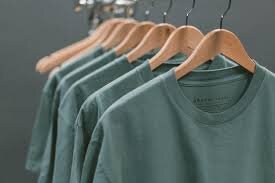Rethinking Cotton
Cotton is the most abundantly produced natural fibre in the world, in 2017 it was estimated that 25 million tons of cotton are produced every year. Compared to other common clothing fibres such as synthetic polyester and semi-synthetic rayon and bamboo, cotton has the advantage of being a completely natural product that doesn’t require an intensive chemical process in order to be transformed into fabric.
Cotton requires a lot of water but is mostly grown in dry conditions. This means that large amounts of water are used to grow cotton every year. Studies have shown it can take more than 2,700 litres of water to produce enough cotton for just one t-shirt.
During the process of making cotton fabric, water can be polluted along the way due to the use of chemicals in the production and dyeing process. It is very expensive to safely dispose of the hazardous chemicals often used in fabric dying. Due to insistent pressure to produce clothing cheaper, this often results in the contamination of river systems. In China, it is estimated that 70% of the rivers and lakes are contaminated by the 2.5 billion gallons of wastewater produced by the fashion industry.
There is an alternative to the traditional cotton fibre. Cotton grown without the use of synthetic chemicals is considered ‘organic cotton’. Organic cotton doesn’t damage the soil, has less impact on the air, and uses 88% less water and 62% less energy. However, traditional cotton uses about 16% of the world’s insecticides and 7% of pesticides. Growing organic cotton, rather than traditional cotton, also reduces levels of water pollution by 98 per cent, according to a 2011 report by the Water Footprint, as synthetic chemicals such as pesticides and fertilisers aren’t used.
In comparison to the 2,700 litres it takes to make one traditional cotton t-shirt, the Soil Association says using organic cotton uses only 243 litres of water for one t-shirt.
Three ways to shop more responsibly:
1. Look out for accredited bodies, such as the Organic Content Standards (OCS) and Global Organic Textile Standard (GOTS), to ensure that the cotton you are buying meets approved standards across the supply chain. The Fairtrade Foundation mark also shows farmers have been paid a living wage.
2. Avoid cotton that has been blended with synthetic materials, including recycled polyester.
3. Most importantly, support brands who have committed to switching to organic.

